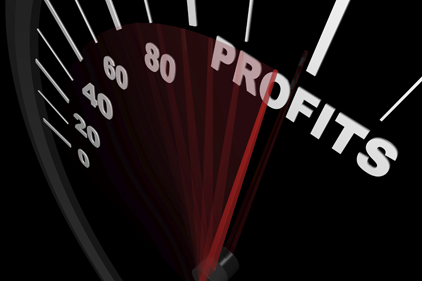 Most HVAC contractors get into the heating and cooling business because they are highly interested in the process, mechanically gifted, or feel it is a great way to make a buck. But, as many find out after opening their doors, it takes a lot more than technical skills and desire to run a successful business. Without a solid understanding of money management — and a keen accounting eye — any small business could be destined for failure.
Most HVAC contractors get into the heating and cooling business because they are highly interested in the process, mechanically gifted, or feel it is a great way to make a buck. But, as many find out after opening their doors, it takes a lot more than technical skills and desire to run a successful business. Without a solid understanding of money management — and a keen accounting eye — any small business could be destined for failure.Defining Profitability
Profitability, as defined by Merriam-Webster, is the ability to yield advantageous returns or results. It is the process in which a good or service produces more benefits than consequences, and in the business world, serves as the ultimate benchmark for success.
Digging deeper, profitability may be measured in numerous ways.
Gross profit margin examines the cost of goods sold as a percentage of sales. The ratio shows how well a company controls the cost of its inventory and subsequently passes on those costs to customers. Generally, the greater the gross profit margin, the better the performance of the business.
Operating profit is defined as earnings prior to interest and taxes. Operating profit margin ratios measure operating efficiency, incorporating all daily expenses into the calculation.
When business owners wish to compute a simple profitability ratio analysis, they most often turn to net profit margin. Net profit margin displays what percentage of each sales dollar shows up as net income after all expenses are paid. If a net profit margin is 5 percent, 5 cents of every sales dollar translates into profit.
HVAC contractors recently interviewed by The NEWS believe that most successful operations maintain a minimum net profit margin of 10 percent.
“Profitability is whatever is left after all expenses and costs are paid, including all taxes,” said Aaron York Sr., owner, Aaron York’s Quality AC, Indianapolis. “In my opinion, our industry should net a minimum of 15 percent after everything is paid.”
York said the old adage of buying low, selling high, and limiting overhead remains tried and true. He added that successful contractors should be reluctant to discount work.
“While that is a rather simplistic idea, the facts of running a business are there. Too many contractors sell too low simply trying to get a job,” he said. “All such practices simply hasten the day of failure. There is always plenty of work waiting to be done and the homeowner or business owner is just waiting for the contractor who has their best interest at heart to do it.”
Roger Grochmal, president and CBO, AtlasCare, Oakville, Ontario, Canada, said many factors go into defining profitability.
“In the residential service and replacement sector, where my company operates, it is important to maintain a profit in the 10 percent range,” he said. “It’s been tough the last few years, but it’s where we all need to be.”
Setting a Price
How does an HVAC contractor know it’s time to raise or lower prices? There may never be a definitive answer, but many of the consultants and contractors we spoke with recommended raising prices sooner rather than later.
“A 10 percent reduction in price will require almost a 100 percent increase in volume — just to stay at the same level of profitability that you started with,” said Grochmal. “If you don’t significantly increase your volume, you will lose money. On the other hand a 10 percent increase in price will double your bottom line. You are almost always better off doing less work at higher prices than more work at lower prices. There is a lot less risk involved and you will sleep better at night.”
George “Butch” Welsch, president, Welsch Heating & Cooling Co., St. Louis, said his company sets prices at the beginning of the year, but admits those prices are not set in stone.
“I allow guys — in the slower winter months — to discount prices marginally to keep work coming in,” said Welsch. “Overall, we try to keep pricing pretty much the same, but will adjust under certain conditions. As long as we don’t get any bumps from manufacturers or vendors, we are able to keep our sticker prices pretty steady.”
York Sr. said pricing on his labor and inventory is frequently evaluated. “Prior to the spring and summer rush, we take a close look at our prices,” he said. “In times of business regression, pricing should also be evaluated. Doing jobs at cost or below cost only hastens failure. Losses only get bigger when we sell below cost.”
HVAC sales trainer Weldon Long believes profitability is a direct reflection of pricing. “Lowering overhead can be a time-consuming and pain-staking process. Raising prices, on the other hand, can be done virtually overnight,” he said. “Most contractors could immediately increase prices by 10 percent or more simply by being willing to slow down the sales process and explain to homeowners how a proper HVAC installation should be done. Often times contractors use the excuse that ‘I don’t do high-pressure sales,’ as a cop-out for inadequately serving homeowners. Successful selling at the kitchen table is about high service, not high pressure.”
Business coach and trainer Frank Besednjak, said if a contractor hasn’t adjusted prices over the last several months, now is the time to do so. “In any other business in the world, they increase price when demand increases; it is just good business,” he said. “Every time we turn around the price of something we buy has changed. Even simple things like milk and bread change from day-to-day. Yet, I still meet people in the contracting business who haven’t changed their price in more than five years.”
Besednjak said regardless of total sales and how busy a company is, success is ultimately measured through profit. “Stop measuring your success on total sales and whether you are busy or not. Measure success based on net profit and profit margins,” he said. “You are not Walmart, so being the low-price leader and trying to make it up in volume is the stupidest thing you could do. Raise your prices to a level that makes your life comfortable, focus on customers you can serve well, and stop killing yourself needlessly trying to take care of the bargain price shoppers.”
Avoiding Failure
The key to maintaining a successful business revolves around revenues, expenses, job activity, balance sheets — and perhaps most importantly — adequate cash flow.
“Typically, it isn’t a lack of profit that kills businesses, it’s a lack of cash flow,” said Welsch. “When things start to turn around, I believe we’ll see more contractors get themselves in trouble by taking on too much work right away. It takes money up front to do work as labor needs to be paid for weekly and suppliers need to be paid monthly. If you suddenly take on a bunch of work, all of a sudden the cash dries up when it comes time to pay the bills.”
Long agreed, stating that cash-on-hand is an absolute necessity. “‘Cash flow is king’ might be the most important words to contractors when it comes to managing the short-term day-to-day financial operations of their businesses,” said Long. “Contractors should review their books weekly and measure individual job costs daily. My personal preference is to measure average revenue per lead and gross margin on jobs on a daily basis. Navigating the daily financial obstacles in a contracting business is critical to long-term viability.
“The obvious pitfall: lack of profitability leads to failure. This reality sneaks up on business owners as unsustainable, slim profit margins are often subsidized with debt and growing accounts payable. In the short term, problems with profitability are masked as debt grows until one day when access to borrowed money ends. When there is no more credit, and suppliers demand payment, only profit can save a company.”
Grassi & Co., based in Jericho, N.Y., specializes in HVAC contractor accounting, auditing, and tax services. Their representatives believe profitability needs to be tracked as frequently as possible.
“Successful owners are constantly monitoring job activity and progress,” said Stephen Mannhaupt, CPA and partner, Grassi & Co. “There isn’t a magic profitability number that works for each situation as each contractor judges profitability based upon their individual short-term and long-term plans. However, at the very least, each job should be examined on a monthly basis.”
Publication date: 8/20/2012








